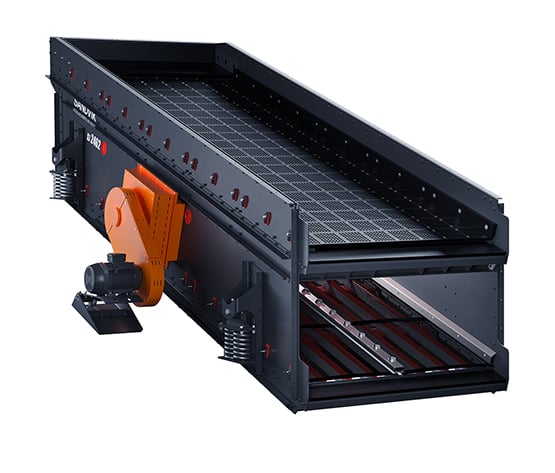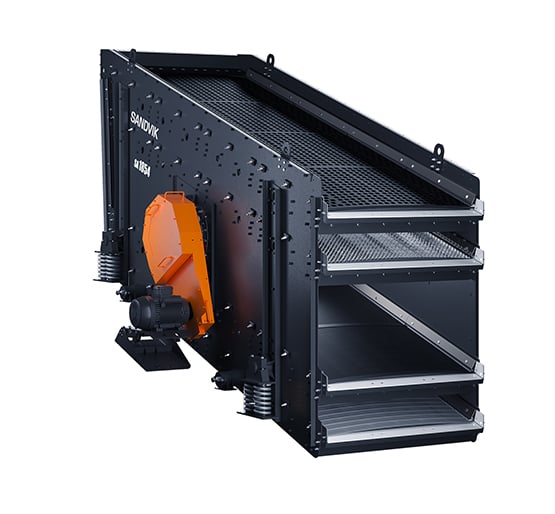It also means that the SL can be set up in environments with low headroom. They have a variable stroke speed, and also a variable stroke motion: stroke length and stroke inclination can be adjusted.
The screening media can be easily changed too – decks can be equipped with any kind of modular, side-tensioned or self-supporting screening media, as well as with wire mesh or steel plate. The SL is available in one, two, or three deck models.
A series of clever design features makes the SL both easy to maintain, and allows for straightforward replacement of components. For example, the cross beams are attached to the screen body with huck-bolts, which makes them both secure and easy to replace (this feature can also be found on the SJ model, below). You can find out more about the SL range and examine the technical specifications here.
The screening media can be easily changed too – decks can be equipped with any kind of modular, side-tensioned or self-supporting screening media, as well as with wire mesh or steel plate. The SL is available in one, two, or three deck models.
A series of clever design features makes the SL both easy to maintain, and allows for straightforward replacement of components. For example, the cross beams are attached to the screen body with huck-bolts, which makes them both secure and easy to replace (this feature can also be found on the SJ model, below). You can find out more about the SL range and examine the technical specifications here.

